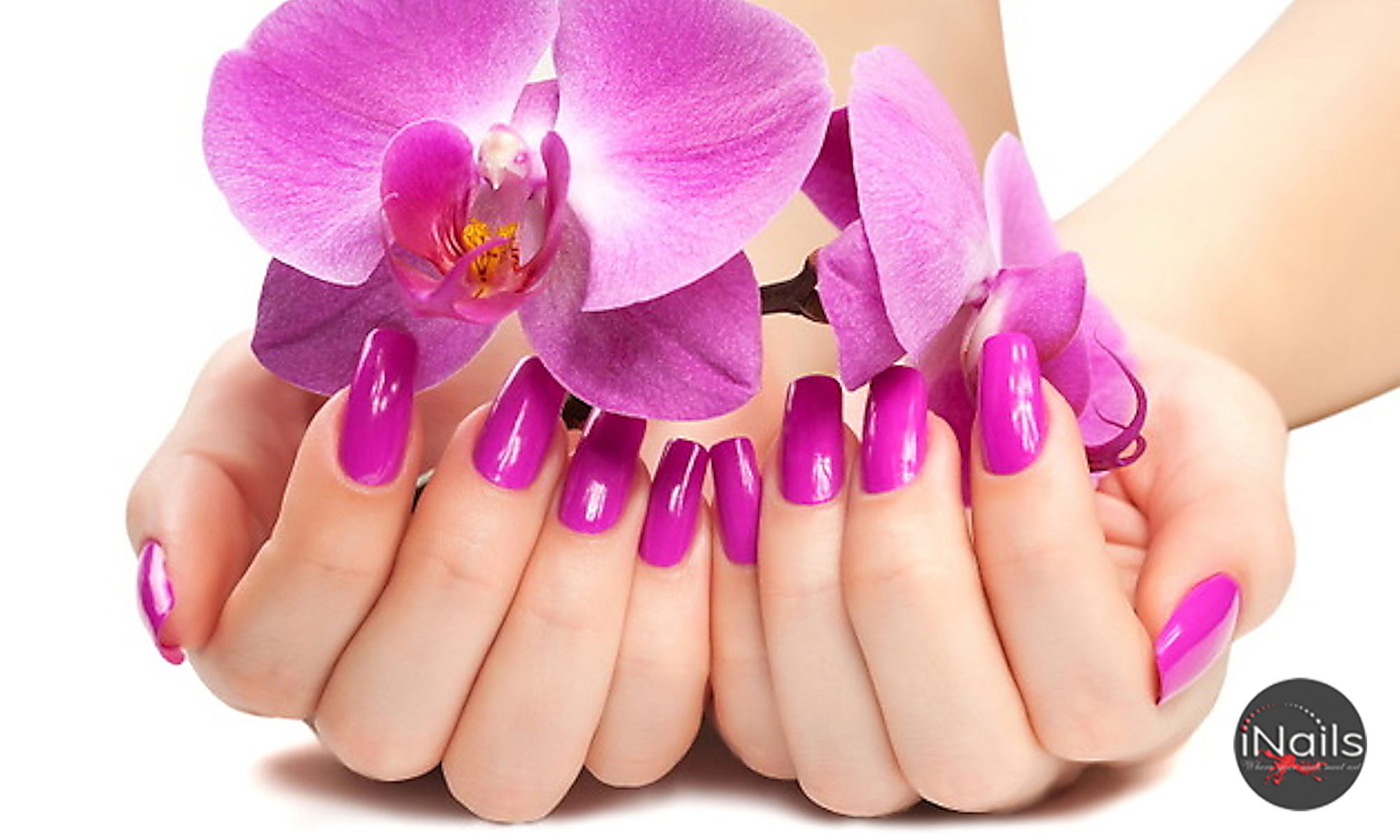Which Nail is Right for You? Acrylic vs SNS Dipping
With new nail technology emerging everyday it can be difficult deciding which nail enhancement is right for you. Acrylic nails are the longtime and trusted industry standard for nail enahancements, but SNS powder dip nails have a similar look with added beneftis, including an easier application and easier removal process.

Although going to the salon is supposed to be an enjoyable experience, it can turn into quite an overwhelming time. With so many nail options to select from, how do you know which option to choose?
Technology is changing every day, and while acrylic nails used to be the industry standard, there are so many more artificial nail options to select from. Every nail enhancement has its own technique, the application process, and set of benefits. Below, we break down the difference between acrylic nails and SNS nails to help you chose the right option for your needs.
What Are Acrylic Nails?
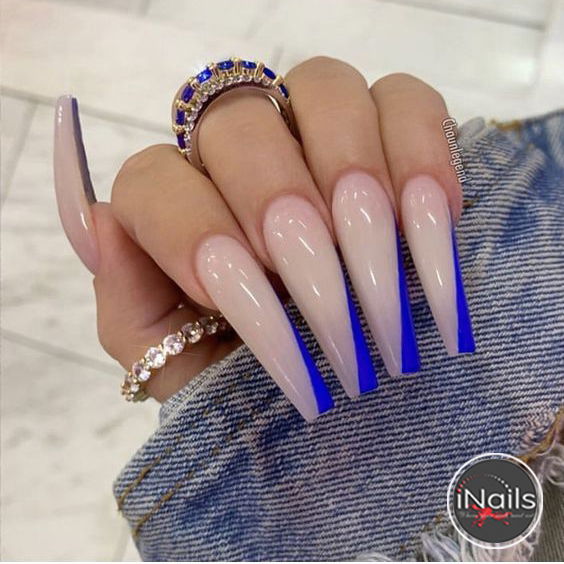
Acrylic nails have long been held as the industry standard for artificial nails. The process for adding acrylic nails has been around for years, and usually includes a combination of an acrylic extension with an acrylic powder that hardens into a long-lasting, beautiful nail. This nail process can be used to make the nails appear longer, or even thinner.
Because the acrylic dries into a hard and durable substance, it is possible to paint the acrylic nail with any type of polish. It is also possible to add intricate and detailed nail art to the final product. Acrylic nails are the longest lasting nail enhancement option available, with the initial set often lasting as long as one month.
What are SNS Nails?
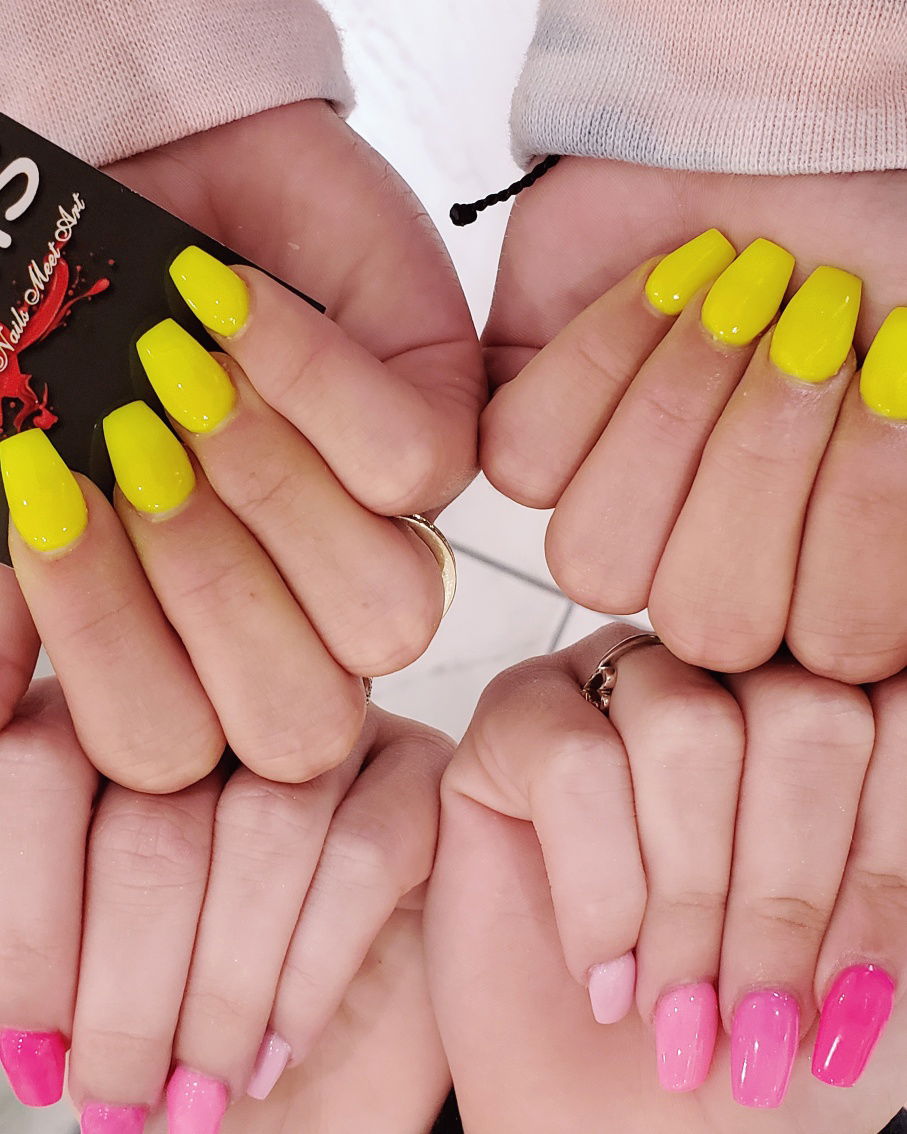
This type of nail application is able to enhance the natural nail through a very simple process. SNS nails are really just powder dip nails, an artificial nail application process. SNS is technically the name of a company that creates a powder dip, so the name SNS has become synonymous with the procedure.
NS nails can be used to create length to the natural nail or can be used to create a stronger, more durable overlay to the natural nail.
Features
When comparing both SNS nails and acrylic nails, each has different features, applications, and materials used. These features can impact how long the nails will last, and how durable the final product is. Below, let’s compare acrylic nails to SNS nails and learn about the pros and cons of each.
SNS Dipping Nails
Often favored as the preferred artificial nail application, SNS nails offer durability and strength to the natural nail. These nails can be applied quickly and can be removed with a simple acetone soak.
Application
The artificial nail is applied to the natural nail using a dip method. This is why SNS nails are often called “dip powder” nails. During the process, the natural nail is first filed and shaped into the desired form. A liquid reactant is brushed onto the natural nail. The nail is then dipped into a powder resin, which reacts with the applied liquid and hardens. The process is repeated until the desired shape, length, and thickness is achieved. There are various dip colors available, and it is possible to create different designs with the dip powder including stunning ombre patterns. The resin hardens on its own, without the aid of UV light which is required for gel nails. The application process is simple, so it is perfect for first-time nail artists to perform.
Materials
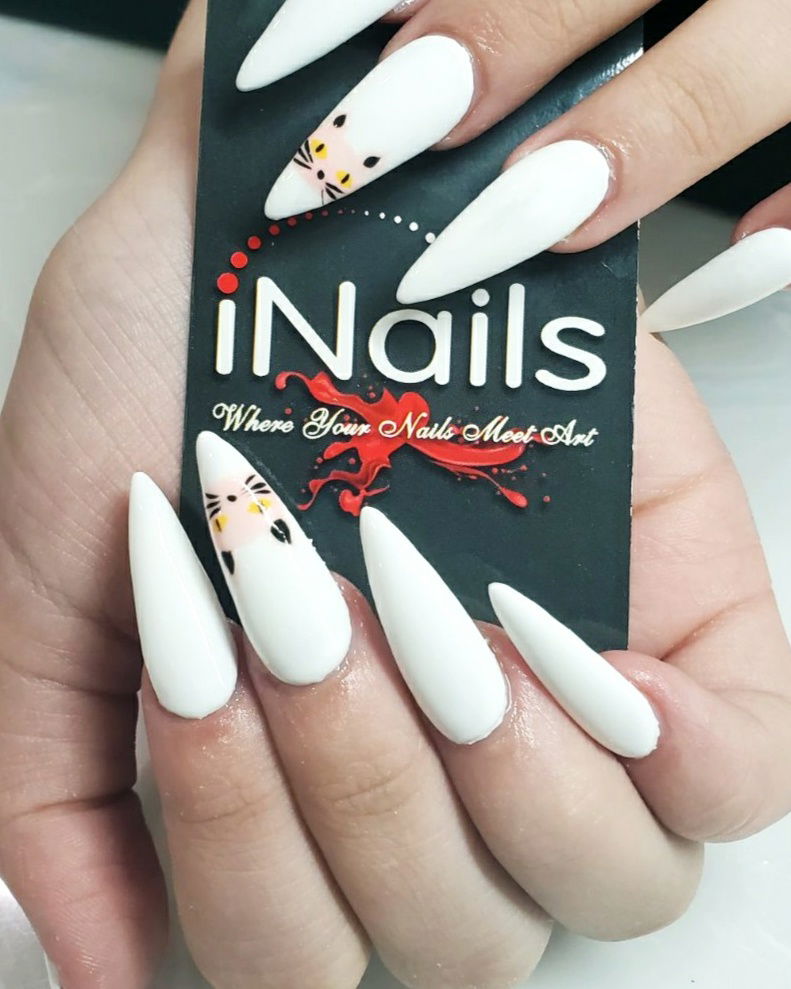
While the dip powder is made of hard and durable material, a manicure using the SNS powder will typically last between 2 and 3 weeks. Although the nail is durable, the acrylic nature of this type of nail will lend itself to breaking, unlike a gel manicure that has more flexibility to it. Usually, people will start to see chipping and cracking around the edges of this artificial nail application.
Cost
Expect to pay between $35 and $50 for an SNS nail application. It is possible to add ombre coloring or opt for a French manicure dip nail, which could cost more money. The removal process can be performed in a salon, or at home which can help save money on the back end of this nail application process.
Benefits
Many people prefer this nail application method because it is a good “in-between” option between traditional acrylic nails and new gel powder nails. This application process is simple, easy for even the most beginner of nail artists to perform. It is possible to add both length and strength to existing natural nails, without the use of clumsy artificial nail extensions, or harmful UV light. Plus, it is easy to remove these nails without the use of a professional. A simple soak in acetone is enough to safely remove these nails.
Cons
Although this may seem like the perfect option for people there is a potential downside. The resin the nail is dipped into is often reused through several clients. This means that it is completely possible to pass along any type of infection or bacterial through the resin from one person to the next. Caution should be taken before selecting the nail salon to perform this technique.
Acrylic Nails
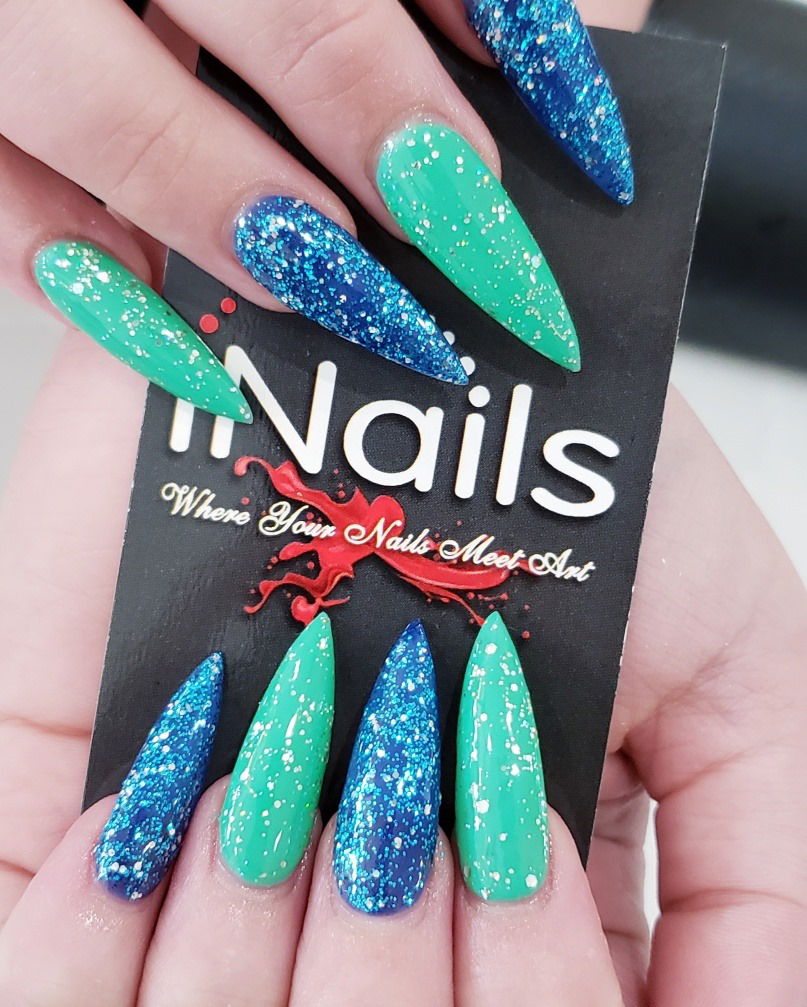
Cons
Although this may seem like the perfect option for people there is a potential downside. The resin the nail is dipped into is often reused through several clients. This means that it is completely possible to pass along any type of infection or bacterial through the resin from one person to the next. Caution should be taken before selecting the nail salon to perform this technique.
Acrylic Nails
Long-held as the industry standard for artificial nails, acrylic nails are an excellent choice to add both length and strength to the natural nail. For first time clients, this process involves both the use of an artificial extension and a powder formed acrylic to help shape and strengthen the nail.
Application
The application process for acrylic nails is a two-step process. For clients that want added length, often an artificial nail is glued to the tip of the natural nail. To smooth and shape the nail, a gel-like substance is brushed onto the natural nail. The gel is formed by combining a monomer liquid with a powder. This forms a temporary gel that then hardens into a rigid material on top of the nail. Acrylic nails will dry and harden naturally, without the use of a UV light. Often, after application, the nail will be further filed and shaped to get the desired look. While acrylic nails can certainly be used to add length and strength to the nail, they can also be used to make the nail appear more slender.
Materials
The materials used in this artificial nail application is acrylic. The acrylic is used for both the nail extension, and for the gel-like powder applied to the nai. The powder is made of acrylic and uses a reactant liquid to soften, and then harden into a durable topcoat on the natural nail. Some chemicals used in this application process can be caustic. People with known allergies should be wary of acrylic nail applications.
Durability
One of the benefits of the acrylic nail option is that this is the longest lasting artificial nail enhancement available. A single manicure can last a month. The acrylic is extremely hard and can withstand a great deal of wear and tear.
Unfortunately though, because this material is so rigid, when the nail does bend it tends to break. These nail options can withstand the usual chips and cracks but will have catastrophic breaks if bent at the wrong angle. A single manicure can last for as long as a month, although it will be necessary to fill the manicure every 2 weeks to keep a polished and professional look. This is a simple process that involves adding the additional acrylic powder to the top part of the nail, near the cuticle. This will give the appearance that the nail has naturally grown out of the nail bed.
Cost
The cost for a full set of acrylic nails will usually be between $35 and $40. This is for a brand-new set. Every 2 weeks, the nails should be filled which can cost $20. Keep in mind that additional design details or nail art can cost extra money.
Benefits
Long-held as the nail standard in the industry, acrylic nails have been around for a long time. These nails are strong, durable, and able to achieve a wide range of looks and shapes. Acrylic nails are able to add both length and strength, and can even help make the nail appear thinner. These nails are long-lasting, and a new manicure can last as long as one month.
Cons
Unfortunately, the toughness of these nails can make them prone to breaking. Because the nails do not flex and bend, any pressure to the outside of the nail can lead to catastrophic breaks. Further, there is some maintenance required with acrylic nails.
After the initial set is put in place, these nails must be filled every 2 weeks to maintain the natural nail look. These nails can contain caustic materials and can be troublesome to people with allergies. Further, acrylic nails must be removed by a professional nail artist. The removal process includes soaking the nails in acetone, which can leave the natural nail underneath the acrylic weakened, thin, and damaged. When comparing SNS nails to acrylic nails, it really depends on what exactly you are trying to achieve with your nails. For long, tough, and strong nails that will last a long time, acrylic might be the better option. These nails can last up to one month after the initial set, and harden into a tough and rigid exterior. On the other hand, SNS nails are formed using a resin powder and will stay in place for two to three weeks. The benefit though is that the SNS application process is simpler, and the removal process is much easier. Consider what you want out of your nails, and how much time and money you want to dedicate to the nail application process. This will help you choose the correct nail enhancement option for your needs.
